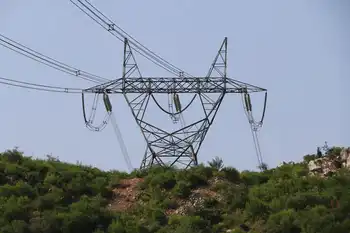Will biomass or natural gas keep Nanticoke alive?
HALDIMAND-NORFOLK, ONTARIO - It's no secret that Haldimand-Norfolk is home to the largest coal-fired generating station in North America.
And it's no secret that Premier McGuinty has promised – many times over – to shut down coal-fired generation at Nanticoke as well as at her sister plants in Lambton, Thunder Bay and Atikokan. The Lakeview Generating Station was demolished by the McGuinty Government in 2007.
Locally, we've long known the cost of the McGuinty green dream includes the potential demise of – what was – a 630 strong workforce at OPG Nanticoke, up to $3 million in goods and services to the local economy and municipal taxes of $4 million/year.
For years, coal-closure has been promised with no plan in place once the units are idled – at least not until now.
On November 23, the people of Ontario were presented with what appears to be an old template of an energy plan dusted-off and tarted up a bit with the obligatory green messaging.
The plan confirms green electricity rate increases, and the closure of two more OPG Nanticoke coal-burning units by 2011. What is of interest for those with employment and economies dependent on four cents per kWh coal is the hint of biomass and/or natural gas as replacement.
The recently passed plan calls for government to “consider the possible conversion of some of the units at Nanticoke and Lambton to natural gas” as well as, “continue to explore opportunities for co-firing biomass”. What’s encouraging are the directions indicating that, “planning and approval work for the natural gas pipeline infrastructure required to Nanticoke will begin soon”. Given government's track record I wonder if these “considerations” and “explorations” are lights at the end of the tunnel or simply McGuinty's train ready to again run us over.
It is also encouraging to see that both OPG Nanticoke representatives and Power Workers Union members made presentations at my recent Jarvis Energy and our Environment Symposium highlighting the potential for energy production and employment through the "refueling", or "repowering" of the Nanticoke Generating Station.
For these reasons it looks hopeful the Ontario Government's recently released energy plan is more than another costly missed opportunity. And after close to eight years of missing opportunities to continue the reduction of emissions of Nanticoke, I'm concerned this government may be letting further environmental and economic opportunities slip through its fingers. I'm equally concerned government is ignoring the wealth of local experience, infrastructure – the dedicated workforce – in generating electricity.
As we continue down a path of shunning power at four cents per kWh for power at 80 cents plus, the government should heed warnings from the likes of Lawrence Solomon, “the grave government is digging this time is big enough to bury the province as well as the power sector”.
Why not continue reducing the NOx and SOx as well as exploring the feasibility of carbon dioxide capture and sequestration with coal - or for that matter with natural gas, which is also a greenhouse gas?
Again, while both union and management are prepared to put shoulders to wheel to ensure continued energy production and jobs at Nanticoke, the fact is we need direction from the top!
We've been waiting seven years under the cloud of job closures – it's time for the Premier to provide clear direction as to how government will repower Nanticoke.
Related News

Ontario will not renew electricity deal with Quebec
TORONTO - The Ontario government does not plan to renew the Ontario-Quebec Electricity Trade Agreement, Radio-Canada is reporting.
The seven-year contract, which expires next year, aims to reduce Ontario's greenhouse gas (GHG) emissions by buying 2.3 Terawatt-hours of electricity from Quebec annually — that corresponds to about seven per cent of Hydro-Quebec's average annual exports.
The announcement comes as the provincially owned Quebec utility continues its legal battle over a plan to export power to Massachusetts.
The Ontario agreement has guaranteed a seasonal exchange of energy, since Quebec has a power surplus in summer, and the province's electricity needs increase in the winter.…




